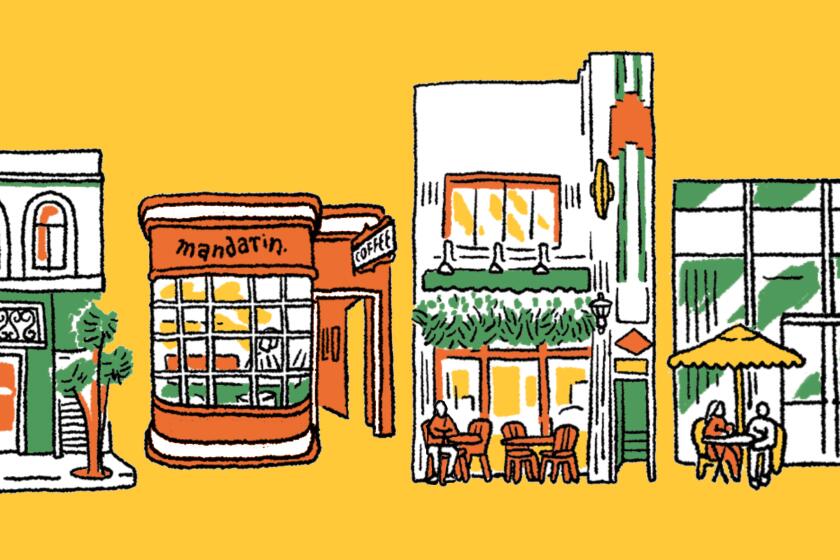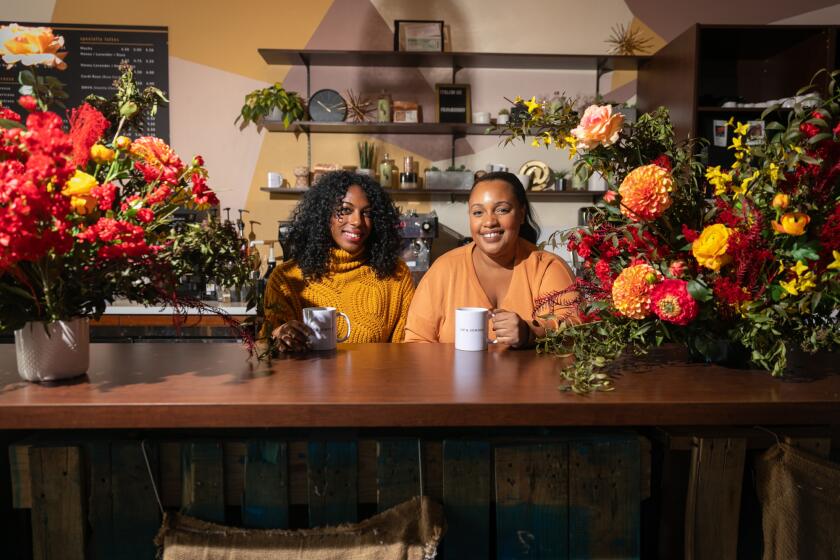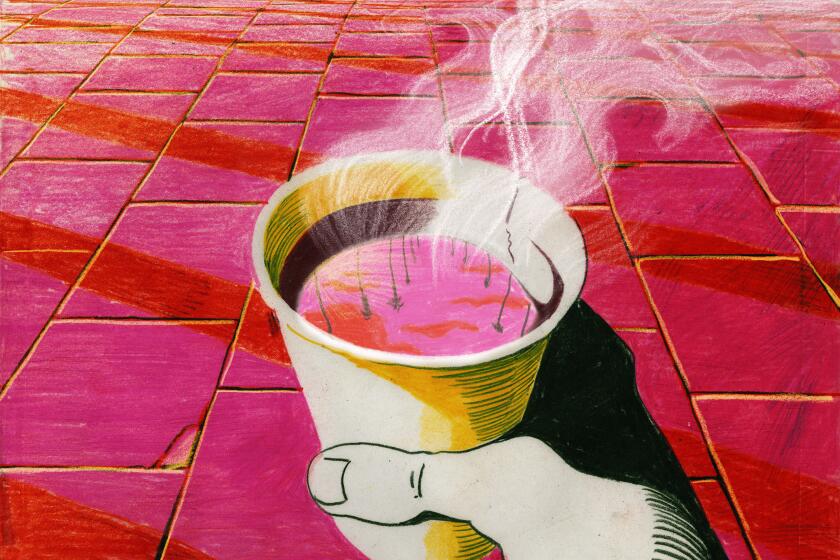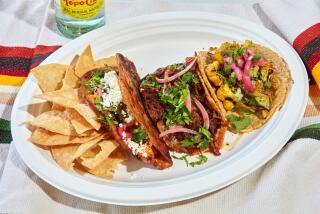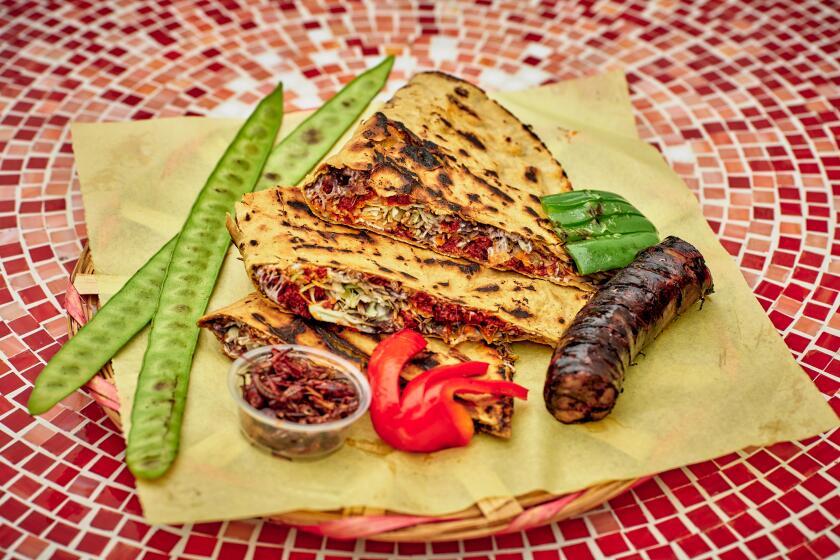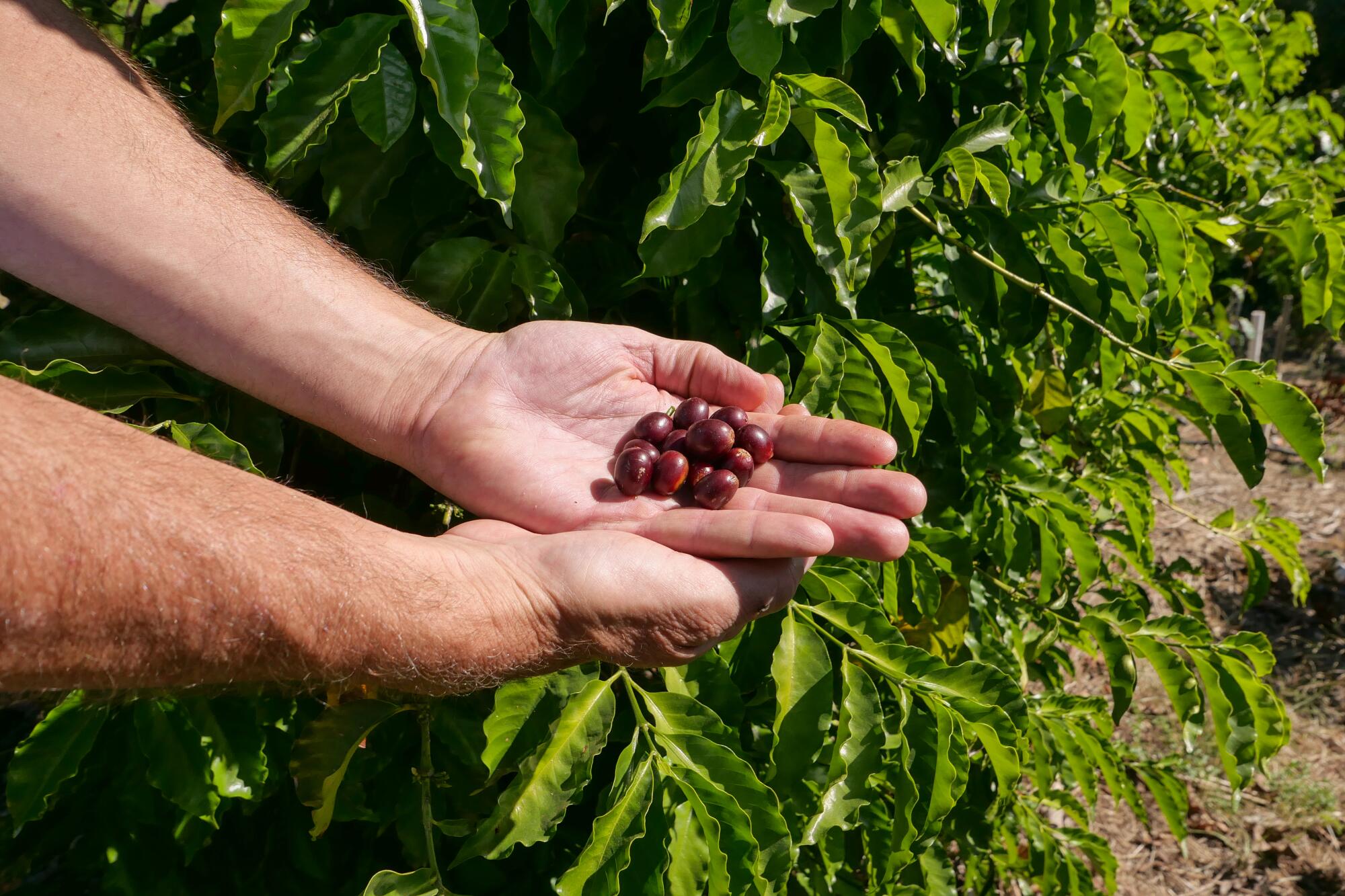
It’s a Sunday afternoon at the San Francisco Coffee Festival at Fort Mason, and Jay Ruskey, founder of Frinj Coffee, is standing at his booth in front of a row of lush green plants wrapped in burlap. He picks up a Chemex and pours some of the aromatic, freshly brewed coffee into small cups. Ruskey and Frinj’s head roaster, Richard Masino, look up to see a long line of customers snaking out past several other booths.
They’re all waiting to taste coffee from beans produced in California — yes, California — not Ethiopa or Colombia or Peru but Frinj’s coffee grown in Goleta, north of Santa Barbara. The coffee in the Chemex is from Ruskey’s own trees, planted at his farm Good Land Organics, also Frinj headquarters.
Frinj is on a mission to make sure coffee crops, previously grown only in tropical climates, can thrive in the Golden State. Before 2000, little to no coffee was cultivated in California. Now, 14 varieties of coffee are being carefully tended on more than 65 farms in Southern California from Santa Barbara to north of San Diego.
The results are garnering renown and gaining fans in the coffee world, and more California coffee than ever will be ready to harvest starting in May and throughout the summer.
“Over the past almost six years, we put more than 100,000 trees in the ground,” Ruskey says. “We’re suspecting by summer 2024 that we’re going to have six to eight times the coffee that we got [in 2023], about 6,500 to 8,000 pounds.”
Find the best cafes, freshest brews and your favorite beans in the coffee-shop capital of the world.
That’s a drop in the coffee bucket compared to the several million pounds grown annually in Brazil alone, but the quality of California coffee is receiving international attention. Recently, Blue Bottle founder James Freeman featured Frinj’s California-grown Gesha variety at his own coffee tasting-menu experience in Los Angeles. A pour-over of Goodland Organics Gesha — with fresh and fruity notes of peach, jasmine and strawberry — was served alongside two exceptional coffees, a Panama Finca Deborah Interstellar Gesha and a Yemen Hayma Kharijiya Aljidan XI.
“It is a privilege that so close to where I live, there is coffee growing that is as good as from any farm I would have to travel across the globe to get to,” Freeman says.
Tokyo-based barista champions Hide Izaki and Miki Suzuki visited Good Land Organics to taste Frinj coffees. Izaki and Suzuki travel the globe to find rare, highest-quality examples to serve at their coffee tasting experience, Cokuun. The two said they were impressed, as they slurped from tasting cups with excitement.
“Initially doubtful about California Gesha, my perception shifted after experiencing an omakase course at Blue Bottle Studio Kyoto and tasting Californian Gesha blind [at Frinj],” Izaki says. “I was pleasantly surprised by its sweet and rich texture.”
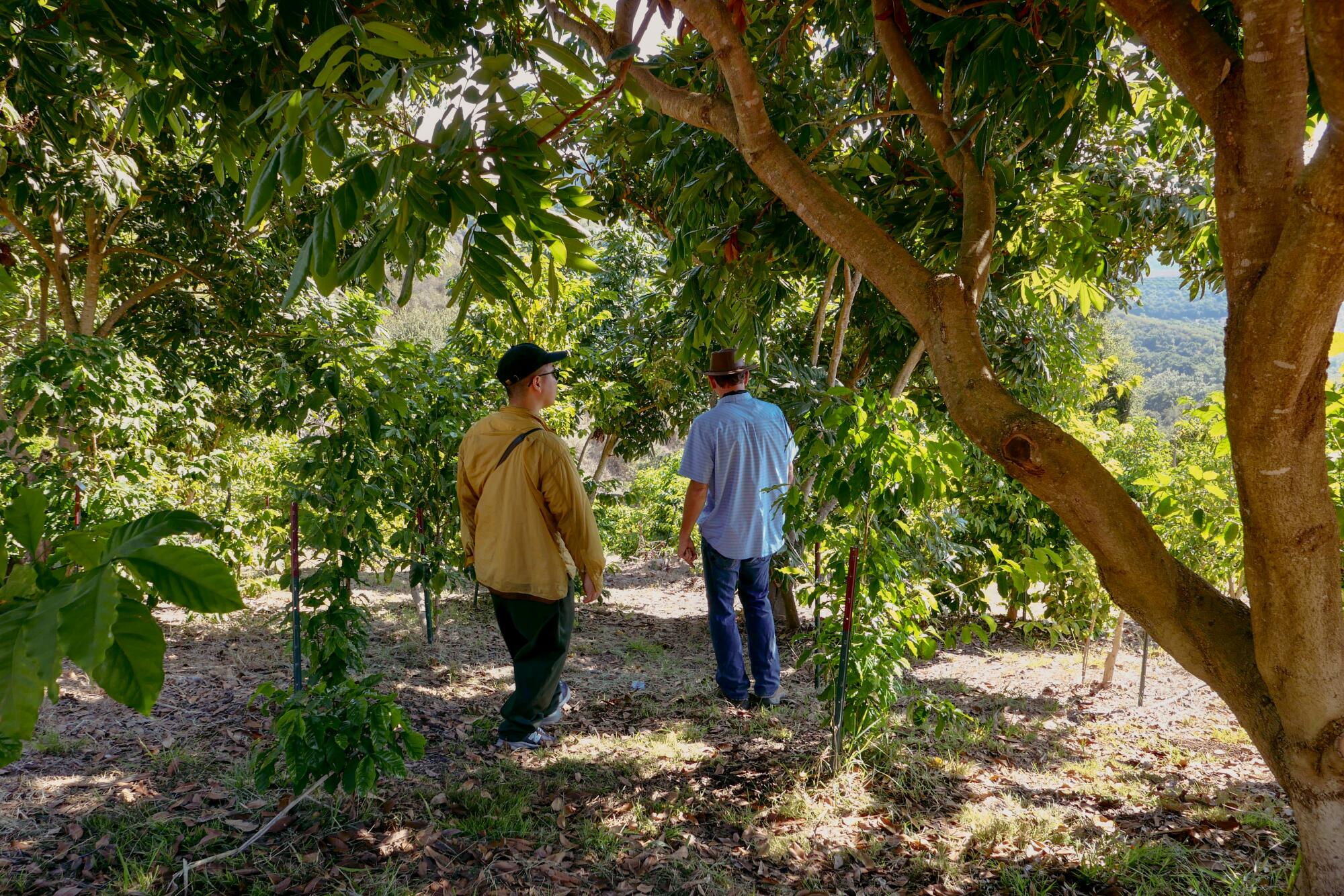
It took Ruskey several attempts from the first planting of coffee trees in 2002 to learn best practices for growing coffee in Southern California. While tropical climates average above 60 degrees year-round and have generally high precipitation, he and other California coffee farmers are focusing on working with weather patterns, multilayer farming with other crops and careful use of water.
“I have always been passionate about crop adaptation,” says Ruskey. “I was working with the UC Cooperative Extension Service to plant lychee and longans when Dr. Mark Gaskell, a small berry crop expert, gave me 40 coffee plants and encouraged me to try planting them side by side with other plants.”
A community-led renaissance is brewing at Black-owned coffee shops.
The 42 hilltop acres of Good Land Organics sits along the western edge of Goleta near the University of California, Santa Barbara, with 10 lush acres and more than 3,500 coffee plants alongside avocado trees that provide shade and protection. The farm also grows ice cream beans, persimmons, pomegranates, passion fruit, dragon fruit, cherimoya and caviar lime in soil that has become more fertile from the biodiversity of crops.
William Ristenpart, director of the UC Davis Coffee Center and a professor of chemical engineering, has been following Frinj’s progress. “I love the idea of having a Napa Valley of coffee right here in California. That’s what Jay and [other] farmers are working towards,” Ristenpart says. “The whole idea of having dual use, growing avocados and coffee on the same land and having two revenue streams for a single farmer, that’s fantastic.”
Ruskey sold his first harvests as roasted beans at the farmers market in Santa Barbara and on the Good Land Organics website.
When Daily Coffee News blind-tasted Ruskey’s coffee in 2014 and named it 27th in the world, it gave him the confidence to consider his project as more than an experimental crop. Eventually he began to offer roasted Frinj beans through some coffee shops, including Bird Rock in San Diego, Burnside in Sacramento and Make Worth Coffee in Bellingham, Wash. The Steward Hotel in Santa Barbara serves Frinj as part of its efforts to highlight locally sourced ingredients.
In Los Angeles, Goodboybob has put Frinj coffee on its pour-over menu and included it as part of a rare-coffee subscription. Marcus Young, its executive VP of coffee, has consulted with Frinj, and as the farm’s yield increases intends to offer more in the future.
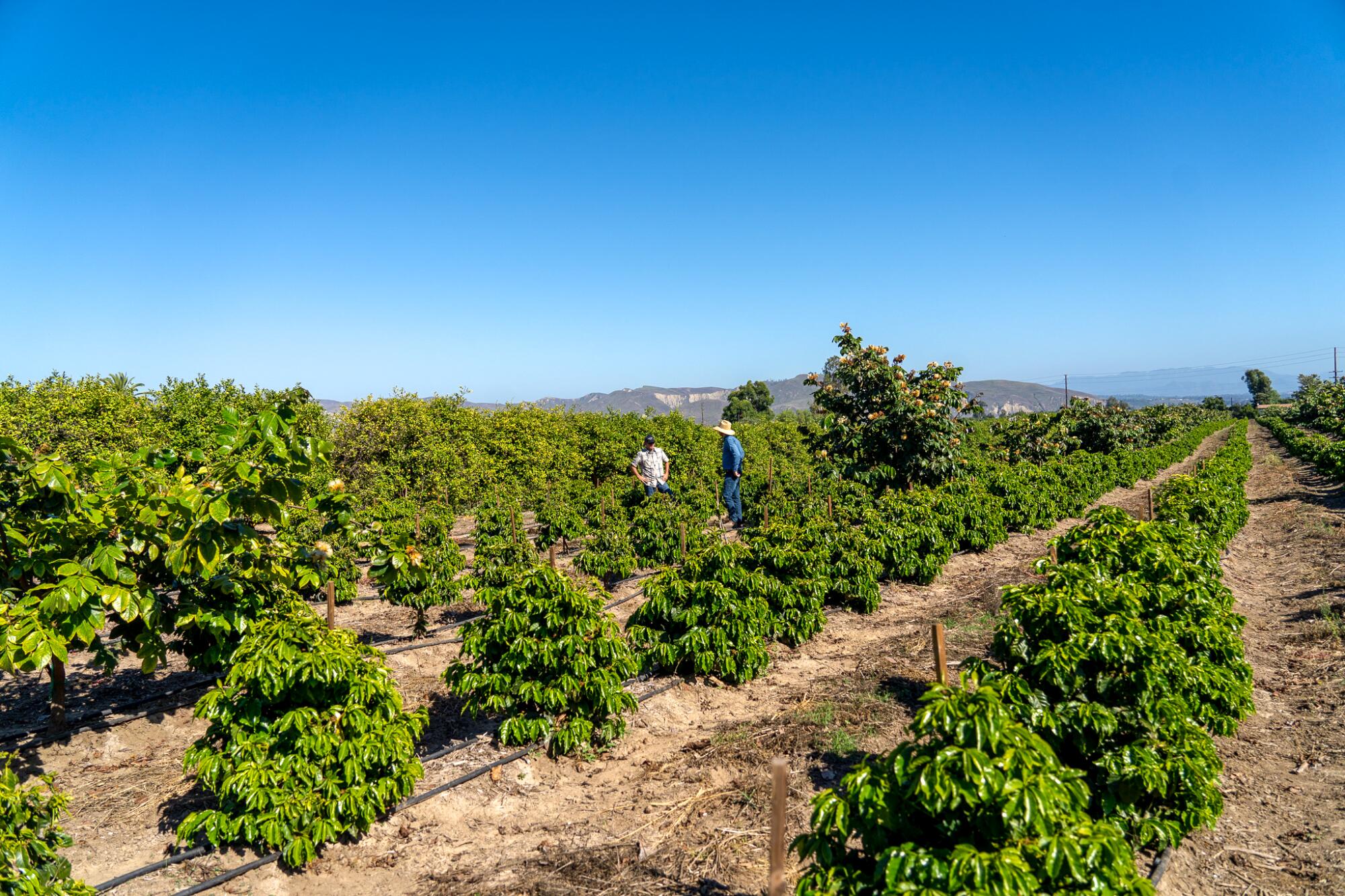
What should we expect from a cup of coffee in Los Angeles? Almost anything, our critic learns.
“We are always excited to have it on our menu,” Young says. “Jay has been part of our speaker series, and we love when he brings coffee trees with him, tying the conversation to something local.”
Frinj also is exploring uses for other parts of the coffee plant. Coffee leaves, flowers and cherries (the fruit) were highlighted in a tea-style course at Blue Bottle Studio, brewed as elegant infusions.
“We’ve really just been stuck on this bean,” says Ruskey. “By being a fruit grower at heart, processing this beautiful fruit with these complex flavors, antioxidants and all these healthy products within the fruit that usually gets composted, I feel like it’s just such a waste and tragedy. So I do think there are opportunities.”
When Ristenpart took a camping trip with his students at Good Land Organics for a hands-on experience, they sampled a batch of fresh cascara (dried coffee cherry) syrup. “We made blueberry pancakes in the morning and we’re pouring it on like maple syrup,” he says. “The best pancakes I have ever had in my life!”
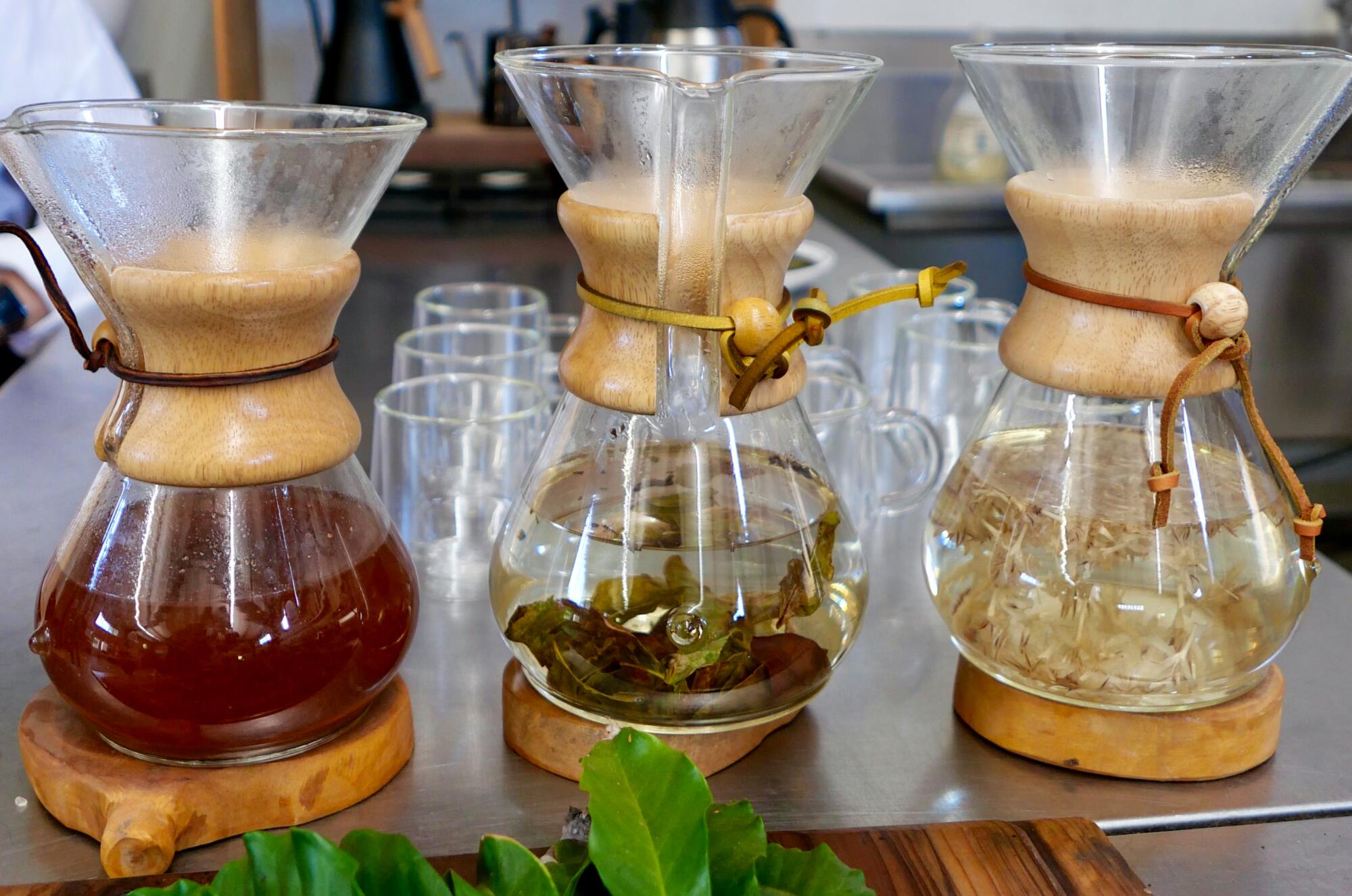
Frinj also supplies plant material, support for cultivation and sales opportunities for other coffee farmers.
“None of this infrastructure was available seven years ago,” Ruskey says. “Coffee is essentially a fruit tree crop, which means establishment can be a long process as it can take four to five years to produce a first crop.”
Once coffee plants are established, trees can produce coffee annually for more than 25 years, “so we are still very early in the California coffee industry’s developmental phase,” he adds
Frinj processes post-harvest coffee, sells green beans, roasts beans and provides sales channels on its own web shop and directly to coffee companies.
Currently on its website, roasted coffee of various varieties from several farms is priced at $15 to $125. A coffee named Sundays at Toro, grown in Santa Barbara County by Chris and Kristina McCausland, is a Pacas variety with tasting notes of black cherry, passion fruit, cacao and Port wine.
Frinj coffees made an appearance at the 2023 U.S. Brewers Cup — a prestigious competition highlighting the craft of brewing filter coffee — in Portland, Ore. Elika Liftee, director of barista education at Onyx Coffee in Arkansas, competed in the finals with a blend of coffees grown at Rancho Delfino in Carpinteria.
“Ideally, we want to be celebrated as top-shelf coffees,” Ruskey says, “and be served in coffee shops that have customers who want to experience some of the best coffees in the world.”
More to Read
Eat your way across L.A.
Get our weekly Tasting Notes newsletter for reviews, news and more.
You may occasionally receive promotional content from the Los Angeles Times.
